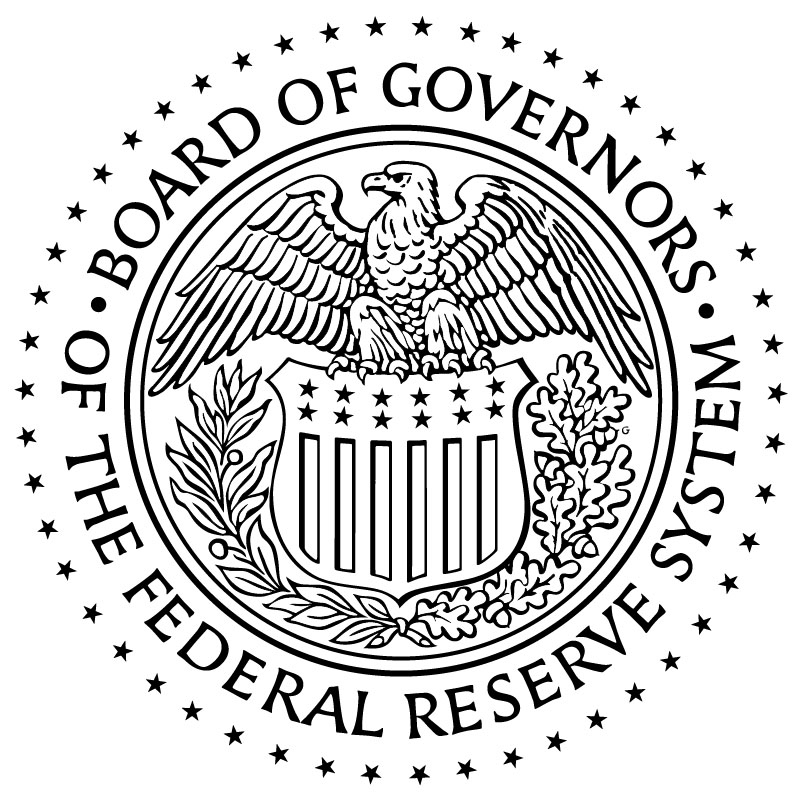
The Tools of Deception:
How Monetary Policy Shapes Cryptocurrency Markets
The rise of cryptocurrencies over the past decade has ushered in a new era of digital finance that exists alongside traditional monetary systems. As blockchain networks operate independently of centralized authorities, the value and demand for currencies like Bitcoin are influenced not just by their own technical frameworks but also macroeconomic forces from established institutions. While cryptocurrencies aim to reshape how money works free from third party control, the monetary policies of governments and central banks still play a role in shaping these nascent markets.
This essay will critically analyse several of the policy tools utilized by authorities and their broader effects on cryptocurrency prices and adoption. From the Discount Window employed covertly by the Federal Reserve to increase liquidity, to upcoming tax payment deadlines that can remove funds from circulation, these invisible hands of macroeconomics leave distinct marks on crypto wallet balances. By exploring concepts like relaxed bank capital requirements, the pace of quantitative tightening, and upcoming events such as the Bitcoin halving, I hope a more informed view of the interplay between policies and prices can be gained.
The goal of this analysis is not to pass judgment, but rather to further the discussion on how technological change will progress alongside established financial frameworks. Both advocates for free market currencies and those who see value in regulated systems have reasonable viewpoints, and understanding interconnections between the two is vital for their constructive coexistence.

To understand the mechanisms by which central monetary authorities can subtly influence markets, one must first grasp the tools at their disposal. One such instrument is the Discount Window, a facility operated by most major central banks including the United States Federal Reserve. Through this window, commercial banks and other qualified institutions are able to access short-term loans by using eligible assets as collateral.
In the case of the Fed, the types of collateral accepted have traditionally been limited to United States Treasury securities and agency mortgage-backed bonds (Mortgage Backed Securities.) By allowing banks to swap such bonds temporarily for cash injections, the Discount Window aims to provide a backstop of readily available short-term funding during times of market stress. Rather than seeing institutions fail due to a shortfall of liquid assets, the Window offers an emergency credit line to maintain stability.
The ability to utilize the Discount Window covertly increases the money supply, as bonds held by banks can be converted to Federal Reserve notes without directly engaging in open market operations. An example, during the most recent banking crisis, was allowing underwater assets to be swapped at their purchase price rather than current market value, thus avoiding recognizing losses. While supporting financial stability, this approach also raises concerns of promoting moral hazard by insulating institutions from consequences of risky decisions.
On a technical level, expanded money supply through the Discount Window has clear effects on cryptocurrency demand and prices. Additional liquidity within the traditional system means greater funds available to flow into new digital asset classes. Recent history has shown spikes in cryptocurrency exchange volumes and market valuations following Fed actions to loosen monetary policy. Therefore, the covert use of the Discount Window during times of stress has likely provided indirect tailwinds for cryptocurrency adoption and bullish sentiment among investors.
Of course, the relationship between monetary policy and cryptocurrency markets is complex with both short and long-term influences. But by understanding the tools that authorities wield to subtly maintain stability, a more informed perspective can be gained on drivers of demand for these emerging financial technologies.
For the Discount Window, there exists an ongoing debate around the right balance between its pros of supporting the system and cons of weakening market discipline.

Banking regulations establish capital requirements that mandate institutions maintain a minimum level of equity in relation to their risk-weighted assets. This aims to ensure sufficient buffers against potential losses that may arise. One such framework is Basel III, an internationally agreed upon standard for capital adequacy.
Under Basel III, holdings of sovereign debt issued by governments like the United States have faced capital charges as a conservative measure. However, authorities have increasingly relaxed these requirements when markets became volatile. A prime example was exempting Treasury securities from supplemental leverage ratio counts during the COVID crisis. This effectively allowed unlimited leverage when purchasing government bonds.
Such relaxed capital rules have incentivized growing bank portfolios of sovereign debt. With minimal equity needed against these bonds, high-risk weighted corporate loans lose appeal by comparison. While increasing demand for Treasury issuance, this shifts capital away from potentially more productive ends that could boost economic growth. This distorts the free market by favouring government spending over private sector job creation.
A broader issue lies in contradicting the very philosophy of capitalism. If prudent risk management through equity capital is not required of large financial players, moral hazard may result as privatized gains coexist with socialized losses. Free market advocates note this weakens discipline and accountability. However, proponents counter systemic stability must take priority over purism during crises affecting the real economy.
As a side note, the strong anti-capitalist world view that is pervasive in many western countries can be attributed to this specific contradiction. The perception that Banks and Governments that perpetuate this slight of hand are "doing capitalism" is a problem. An open and transparent financial system as envisioned by those of us in the cryptocurrency sphere is one possible solution.

Between mid-April and early May, several forces will shape dollar liquidity with technical impacts for digital currency markets. On April 15th, individual tax filings will remove funds from circulation as payments exit private holdings. Trillions flow to government coffers under current laws.
Simultaneously, the Fed's balance sheet will continue to shrink through quantitative tightening as bonds mature without replacement. Around $95 billion vanishes monthly from the money supply. These synchronized liquidity withdrawals make April a riskier period.
Savvy crypto traders keep a close eye on such events. Short-term volatility rises as dollars exit, creating opportunities. Well-timed positions can profit from amplified price moves. The coming weeks offer potential alpha for those closely watching monetary flows.
Less experienced crypto traders will face greater odds of buying local tops or selling bottoms out of fear as the volatility tests their nerve. Long-term believers will focus on accrual, ignoring short-lived liquidity-driven swings. If you want some free financial advice, dollar cost averaging through periods of diminishing liquidity builds resilient portfolios.
Every four years, Bitcoin undergoes a halving where the block reward for miners is reduced by half. Set to occur in mid-April, the reward will drop from 6.25 to 3.125 BTC per block. This disinflationary event is baked into Bitcoin's code to control long-term supply.
With fewer new Bitcoins entering circulation each day, the sense of scarcity is expected to increase, potentially boosting the price. Many analysts point to past halving's correlating with bull market uptrends in the following year as this dynamic plays out.
However, there is a history of short-term bearishness that precedes the long-term optimism. With the date highly publicized, many traders speculate on price movements in the weeks surrounding the halving. Profit-taking or liquidations to lock in gains could drive a price slump. Additionally, some miners may sell extra inventory before the rewards shrink, cashing in before the halving to ensure they have adequate funding to maintain normal business operations.

Regardless of temporary volatility, the halving underscores Bitcoin's immutable long-term monetary policy. Each four years, its supply emission schedule automatically readjusts - a reassuring quality for those who view the cryptocurrency as "digital gold." Only time will tell how markets respond to the upcoming halving's influence on coin supply and demand fundamentals.
For some of the big players in the crypto sphere, now is a time to exit various cryptocurrency positions and hold stablecoins. For example, Arthur Hayes writes in his latest essay about his stance of avoiding unnecessary risk when macroeconomic conditions face uncertainty. For those not closely monitoring markets, heightened volatility in April could lead to losses better avoided.
This essay has critically analysed an array of monetary policy tools wielded by central authorities, from the Discount Window to tax deadlines, and their technical impacts on cryptocurrency prices. As explored, these mechanisms play a necessary role in maintaining short-term stability, despite valid criticisms around moral hazard and free market principles.
If you have read this far, I thank you. Please help to further the conversation by sharing this analysis and following for continued discussions on the cutting edge of finance.







 208
208
